
views
Highlighting Important Information
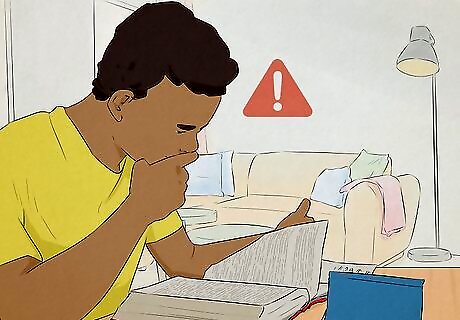
Read the assignment carefully to identify priorities. If you annotate everything you read, your annotations won’t really help you find what you need when the time comes. Before you start reading, decide what you are looking for. If you are in secondary school, you may want to ask your teacher for a list of suggested annotations. Clearly annotate the thesis and key parts of the argument in an essay. Underline evidence that you find questionable. This will be useful if you want to argue that the author’s thesis is wrong. Annotations on works of literature usually identify plot, character, and theme. However, they can also include setting, vocabulary and figurative language. If you are reading for pleasure, highlight points that you found very interesting and that you might want to go back to. Consider, for example, annotating quotes that you really like and might want to use later. In addition, if you run across a big idea that changes the way you think, highlight it so that you can return to it.

Read closely and actively. Successful annotation is only possible if you are always reading actively, meaning you’re thinking about the information and processing it. Consider reading shorter works multiple times and circling things you had trouble understanding the first time. Slow down. Read aloud verbally or in your mind. Don't skim through the text. You can also underline key terms or put brackets around longer phrases.

Highlight the theme or thesis. No matter what your assignment is, you will need to understand the big idea of the text. Any part of the book that seems to speak to a major idea, should be clearly marked. Consider drawing a big asterisk in the margins so that you can easily find these elements later. In an essay, the thesis is typically in the first paragraph, but not always. It summarizes the main point or idea of the essay. The theme won't be a sentence. Instead, look for the repetition of certain ideas or significant passages (usually during the climax of the story).
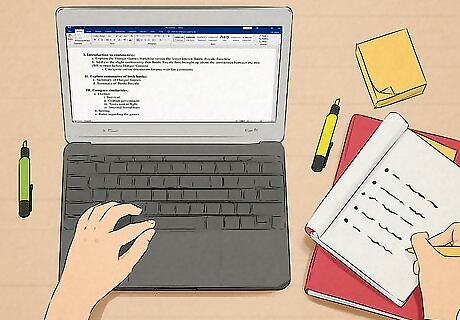
Keep writing utensils on you at all times. If you miss something important it can be very difficult to go back and find it. Yellow highlighter is the best way to mark text without making it hard to read. Pencil is easy to erase if you want to correct something or return the book to pristine condition after you finish. Pens aren’t great since you can't erase it if you make a mistake. It may also take away from the sell-back value if this is a textbook. If you choose to use a pen, consider blue. It will stand out from the black text of the book, but it won't detract from it, like hot pink or purple might. If you can’t stand to write directly into your book, use Post-It notes instead.
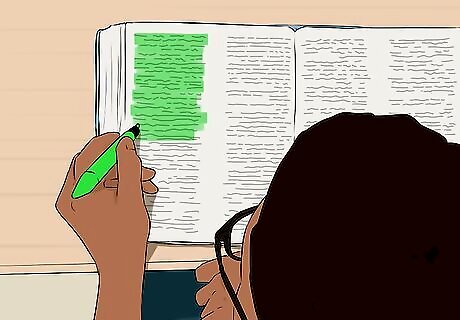
Highlight important passages. Taking a yellow highlighter to important parts of the reading is the best way to mark relevant sections without making it harder to read. Consider using different highlighter colors for different parts of the text. For example, you can use yellow for longer passages, and pink for important key terms. Most e-book readers will allow you to highlight passages. Some will even allow you to use multiple colors when highlighting the text. If you don't have a highlighter, put brackets around the passage instead. You can do this with a pencil or a colored ballpoint pen (i.e.: pink, purple, blue, red, etc). If you're a visual learner, you can also artistically annotate important passages by drawing them and then writing an explanation of what your drawing is. Stick to highlighting super important information. If your entire text is covered in highlighter, you won’t be able to figure out what’s actually important.
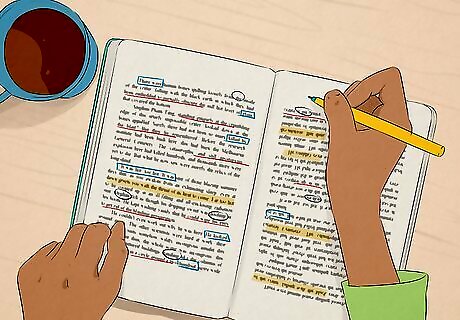
Use different techniques to identify characters or literary tropes. Use circles, boxes, multiple colors, and so on. The more techniques you use to annotate the text, the easier it will be to find specific types of information. You can, for example, circle vocabulary you have trouble with so you can easily skim through and find vocabulary later. How you use each type of annotation will depend upon what you need to look for in the text. For example, you may want to circle new vocabulary, box figurative language, underline thematic statements, and place parentheses around descriptions of settings. You can use different color highlighters to identify text relevant to character, theme, or setting. You can also use different color highlighters to identify important statements about different characters. You can create different symbols to make it easier to identify relevant pages. For example, an asterisk in the margins or top of the page could identify pages with major parts of the argument. You can use arrows to point to quotes that you know you will use during the essay.
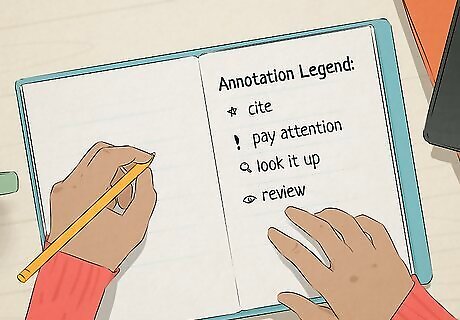
Create a legend for your annotations. Make a list that explains what each type of annotation you use means. If you are using a print out, write the key on a blank piece of paper attached to the printout. The front or last page of a book can also be a great place to write out your index. For an e-reader, write a note at the beginning of the text. Be as consistent as you can with your symbols so you understand what you were trying to say.
Taking Notes
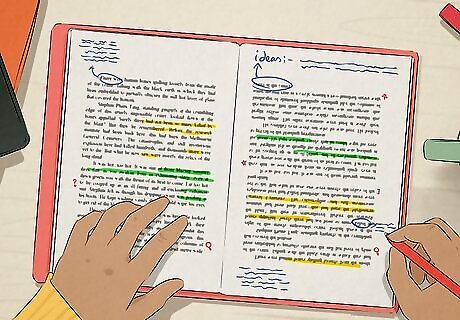
Write out your own original ideas in the margins. When you find a passage that may apply to your assignment, create brackets around the text. Then, record significant observations or ideas in the margins. Be prepared to explain how the passage or quote relates back to your argument or thesis for the assignment. A common mistake with annotations is to underline too much and take too few notes. Your notes will help you to make important connections that you can refer to later. Otherwise, you might forget what it was that you found to be important about the underlined section.

Make predictions as you read. Write down predictions so that you can return to the text later and remember where you think the text was going. This can be a good way to think about how the story or argument evolves and to pick out any curve balls the author might have thrown. You won't always have to do this, especially if it is an essay. Consider making your predictions on Post-it notes or on a separate sheet of paper. This will free up your margins for more important information.
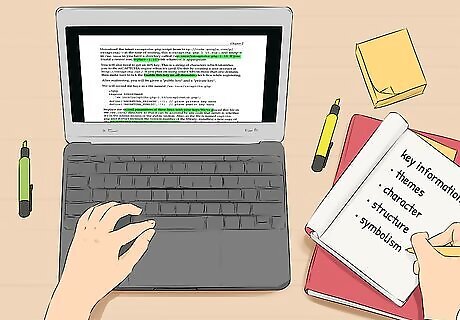
Keep an index of key information. Write down page numbers and a short description for the most important parts of the book. Try to group these comments by relevant subject, like theme, character change and repetitive figurative language on your additional note pages. For a book, consider putting the index on the front page. Otherwise, write them on a separate page, or in a word file. Keep a list of themes and important figurative elements. This is especially important if you are going to be asked to do a literary analysis or write an essay. You can write these on a separate piece of paper, or on a blank page in the front of the book. While you're reading the text, keep track of moments when major characters change or evolve. List comments and page numbers under each theme. The more detailed you are, the easier it will be to write a paper and provide evidence.
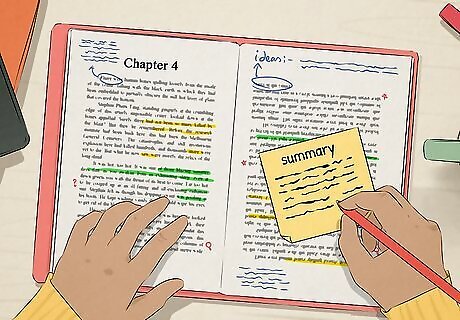
Summarize the important points of each chapter. This will make it easier to go back and find relevant material; plus, it will force you to digest what you read. Consider writing your own title for the chapter to help you think about the theme and major events of each chapter. In a book, you can write this in the space between chapters. For e-books, write notes at the end of the text in the chapter. You can also write comments on a separate piece of paper or in a word file. You can also make a list of reflective questions to ask yourself at the end of every chapter so it's easier to summarize them.
Using Annotations to Understand a Tough Text
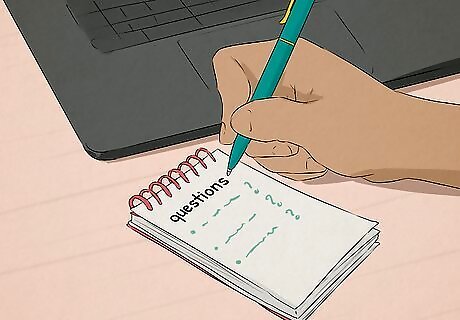
Write down questions that you have. When you hit parts of the book that you have trouble understanding or that you think require deeper analysis, write questions in the margins. Return to these after you finish the book to see if you can answer them. Questioning the text is a good way to produce original opinions about it. Write these in the margins in pencil or on a separate sheet of paper. When you get the answer, go back and write it under the question. If it's too long, write the page or paragraph number that the answer can be found on.
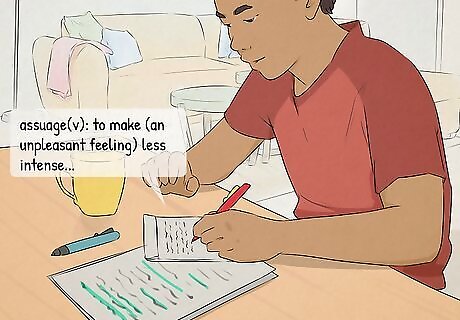
Write definitions. When you encounter a word that you’re having trouble with, circle it. Look it up when you can and write the definition next to it. If there is enough space, you can write the definition under the passage. For example, text books often have several line breaks between paragraphs. Take advantage of these. Take note of any key terms as well. Mark these in the passage so that you can see how they are used.
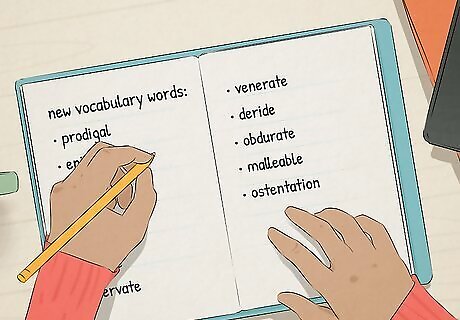
Record new vocabulary words. Create a list of words that you circled, then go back and study it before you re-read the chapter. This will make it easier to understand the passage the second time so you don’t have to spend as long on it. You can write these directly next to the words as they appear, or you can keep a list on a separate piece of paper to look back on later.
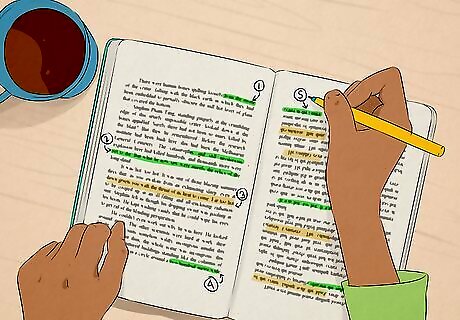
Number important steps in plot development or argument. When you are trying to understand a process or a plot line, write down numbers on the margins. Number each step in the process as you encounter it. Then, when you go back, you can quickly identify how something happened. If, for example, you are reading a book on chemistry, you could number each step necessary to produce a chemical reaction.
Annotating Digital Text
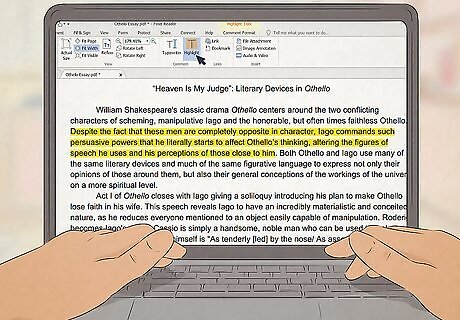
Highlight and write directly onto a PDF. If you’re reading text through a PDF, you may be able to highlight, edit, and take notes directly onto the article itself. Head up to the settings and options buttons in the top right hand corner of the screen, then click on the option you’d like to choose. If you’re using a tablet, you can write on the margins of the PDF with a stylus to take notes.
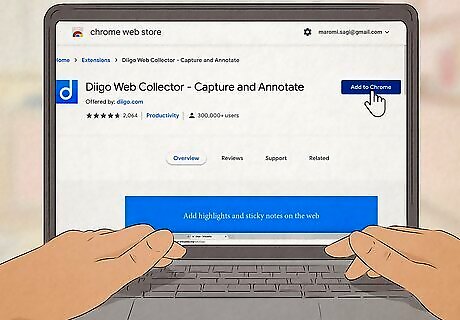
Download a browser extension to annotate texts online. If you read a lot of tough to understand text on the internet, you can download an extension that lets you highlight and jot down notes directly onto the page. Most extensions also let you bookmark your pages easily so you can come back to your notes anytime you need them. Diigo, A.nnotate, and Kindle for PC are a few popular browser extensions for annotation. You should note that these browser extensions will often not let you annotate PDFs or word files—they’re for web pages only.
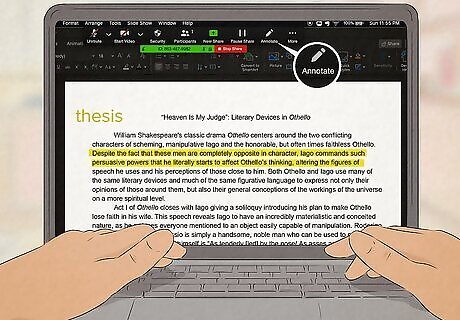
Annotate directly onto a Zoom meeting. Sometimes it’s helpful to take notes during a meeting or a lecture, and you might want to keep your notes with the topic at hand. If you’re using Zoom, open up the Settings tab and head to Account Management → Account Settings. Click on the Meetings button, then scroll down to “Annotation” and make sure the toggle is switched to the “on” position. Once your annotations are turned on, you can use a pen tool, highlight tool, and even share your screen with others so they can see your notes. You can also annotate on the Zoom app if you’re using a mobile device.















Comments
0 comment